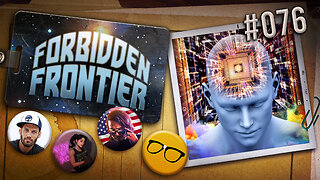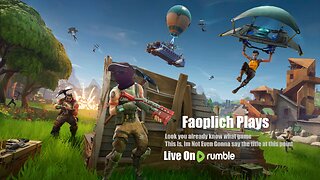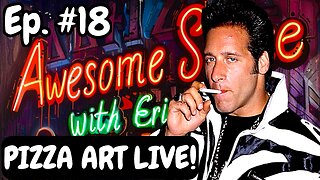How Generative AI Helps Bring Big Design Ideas to Life - CNET
🥇 Bonuses, Promotions, and the Best Online Casino Reviews you can trust: https://bit.ly/BigFunCasinoGame
How Generative AI Helps Bring Big Design Ideas to Life - CNET
I'm a terrible artist. Though I dabble with 3D design, I have zero drawing ability and my painting skills are even worse. That doesn't stop me from having an excess of creative ideas, though, and it's demotivating not being able to bring those ideas to life. Generative AI, when used properly, can allow people with big ideas and little skill to carry those concepts into the real world. Machine learning and AI are all the rage, with OpenAI, Google and others striving to give us large language models capable of natural-sounding responses. In the visual world, companies are bringing generative AI to art, allowing us to make images using nothing but words (Midjourney), or by creating and adapting photos with AI (Adobe). These tools have a chance to make art accessible in a way that's never been achieved before. I'm a maker, a person who loves to create physical things in the real world, but it seemed like AI wouldn't really help me with that. Sure, several of my 3D printers, like the AnkerMake M5, use AI to spot errors in the print, but that's rudimentary at best. I'd seen nothing to make me think AI could help realize my ideas. That is, until I saw a video from another maker, Andrew Sink, who used text prompts through ChatGPT to create a 3D object that could be 3D printed at home using code. "I almost missed a flight because I was so captivated the first time I tried it!" Sink told me. "Seeing ChatGPT produce what looked like a 3D model in the form of an .STL file was an exhilarating experience." An STL file is a 3D printable file that uses a set of instructions to create triangles called faces. Sink used ChatGPT to create the STL file, completely circumventing the design process and putting it in the hands of AI, and it worked. It was a simple cube, but this was the first time I thought about how AI could produce tangible products in the physical world. Sink is the first to admit that generative AI still needs some supervision by someone with technical chops: "Upon closer examination (as documented via YouTube Short), the file had multiple issues and required cleanup in the form of mesh editing, something that many users will likely not expect. This brought me back to reality, and reminded me to think about ChatGPT as a tool to be used in a workflow, and not a complete solution." However, it does open the door to something more. New companies have started springing up, using generative AI to create artwork from text-based commands — called prompts — and some of the results these companies are producing are spectacular. Two-dimensional art is already breathtaking If you're looking for something that transforms words into 2D imagery, it's hard to beat Midjourney. The company runs its service mainly through Discord and produces stunning images from text prompts. My wife and I are working on a project to convert our basement into a 1920s speakeasy, complete with a bar, pool table, dartboard, leather couches, and booths to play board games. It's ambitious; there's a lot of wall space we need to cover, so we wanted to try some generative art for our walls. The idea was to give us completely unique art in the exact style we wanted in a color scheme that matched our room. Enlarge Image We wanted to create a good 1920s feel in both images from Midjourney. Illustration by Midjourney We had to learn the craft of "prompt engineering" to write the kind of detailed text prompts required to produce the image we wanted. We tried two different prompts for the images above. Left image: "A 1920s street scene with suited men walking on the sidewalk. People have umbrellas open and it is raining. A tram is in the picture with a red color on the tram. Grainy photograph." Right image: "A 1920s Art Deco speakeasy with lots of hanging lights and red leather couches. Old photograph style." While the images themselves aren't perfect — check out the gentleman with an umbrella for a hat on the left of the image — they're good enough to be hung in our basement. The imperfections even add to the fun of having them AI-generated. Adobe also released a generative AI tool for Photoshop that can do something similar to what Midjourney does, and perhaps go even further, expanding your images or editing them in new and interesting ways. You can see a lot of problems on the fringes of thi...
-
 2:01:49
2:01:49
Nerdrotic
12 hours agoDo We Live In a Simulation? | Forbidden Frontier #076
55K55 -
 2:18:38
2:18:38
vivafrei
16 hours agoEp. 230: Kamala Goes to Border! Klappenstein X Ban! Pennsylvania Corruption & MORE! Viva & Barnes
189K208 -
 LIVE
LIVE
Vigilant News Network
16 hours agoMainstream Journalists Inadvertently Reveal the Shocking Truth About Climate Change - Media Blackout
4,664 watching -
 1:22:06
1:22:06
Josh Pate's College Football Show
14 hours agoAlabama Beats UGA | Deion & Colorado Arrive | Ole Miss Gets Upset | AP Poll vs JP Poll Reaction
64.8K13 -
 2:28:31
2:28:31
Faoplich
10 hours agoStream #141 Fortnite With Vortex!
52.2K6 -
 3:36:27
3:36:27
EricJohnPizzaArtist
10 hours agoAwesome Sauce PIZZA ART LIVE Ep #18: The Diceman
81.2K22 -
 LIVE
LIVE
Right Side Broadcasting Network
1 day agoLIVE REPLAY: President Trump Holds a Rally in Erie, Pennsylvania - 9/29/24
3,727 watching -
 5:43:23
5:43:23
Rescue The Republic
16 hours agoRescue The Republic
128K59 -
 4:43:02
4:43:02
Drew Hernandez
1 day agoTRUMP RALLY ERIE PA & TRUMP FORCE 1 MISSLE THREAT?
134K143 -
 40:30
40:30
Athlete & Artist Show
2 days agoDave Portnoy Offers UMich $3M For QB, Zach Shows Off 5th Championship Ring
145K27